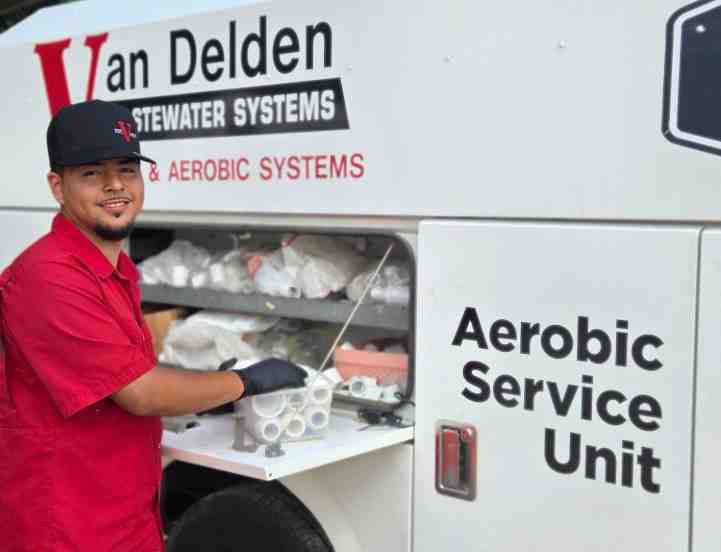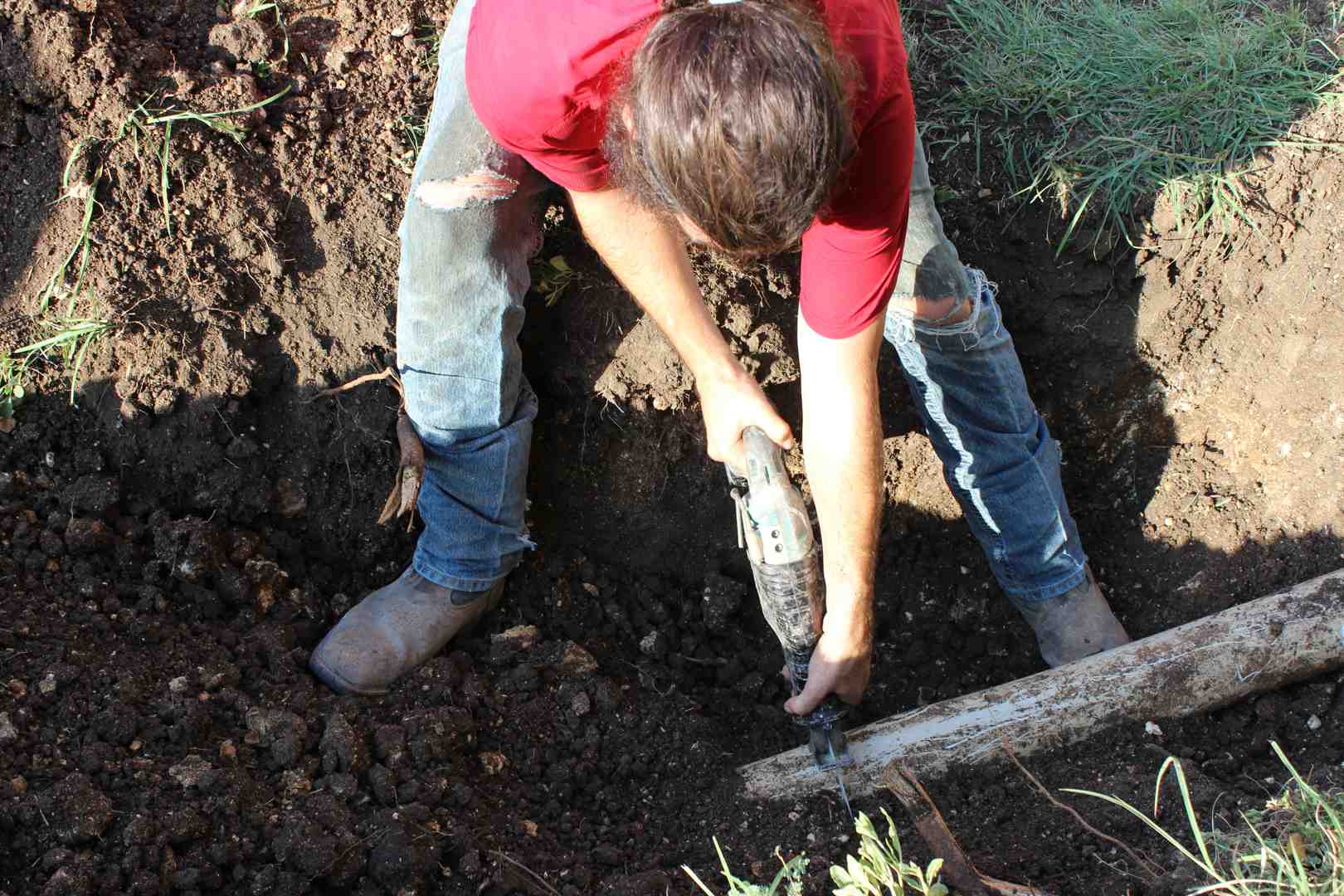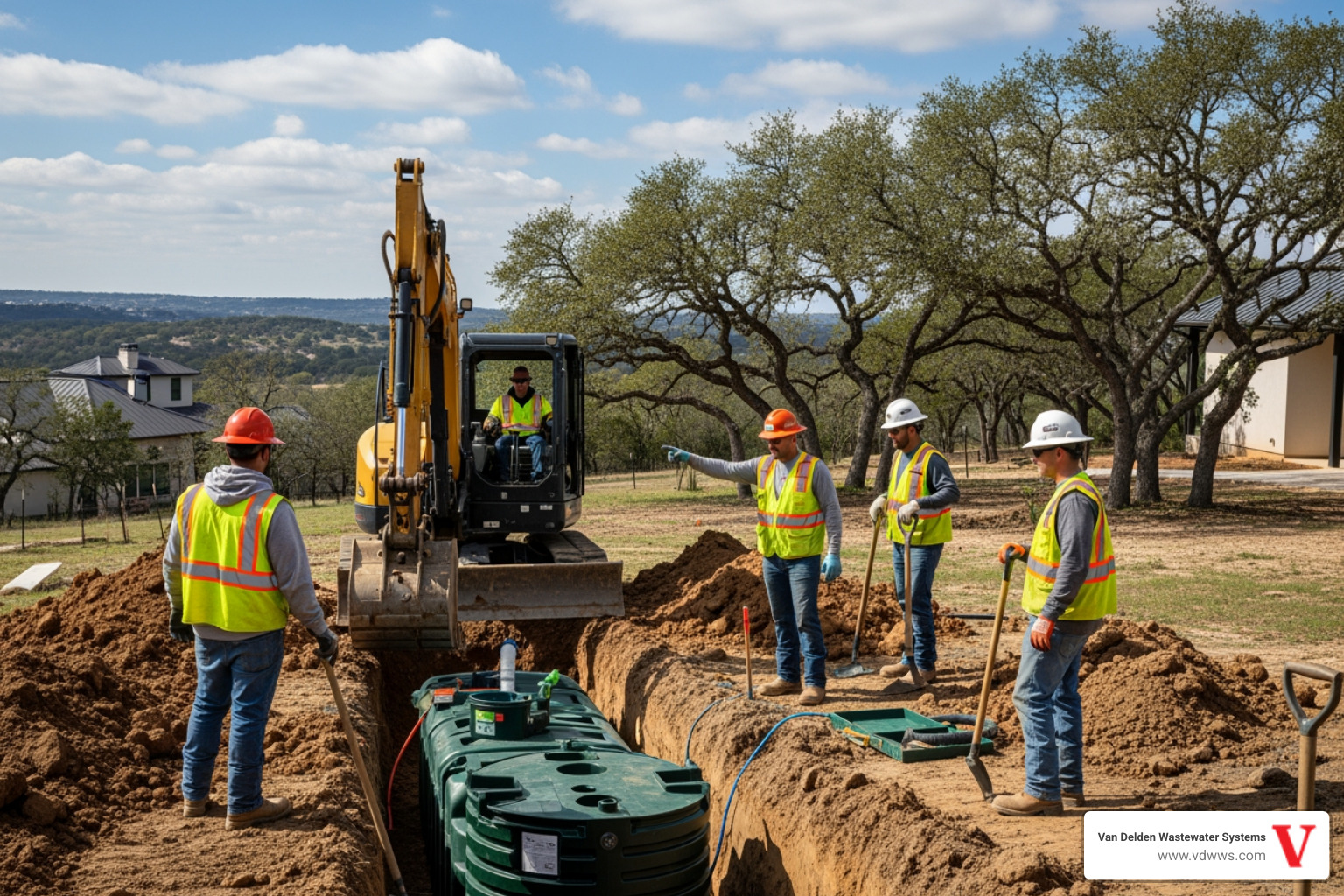Homeowners in Hollywood Park put a lot of effort into keeping their property in good shape, especially when it comes to underground systems like septic tanks. When a freshly installed septic tank begins to sink, it doesn’t just mess up the look of your yard—it can turn into a serious problem that affects how the whole system works. Whether it’s a slight tilt or a full shift downward, tank sinking can lead to damage, backups, and long-term costs if left unchecked.
The good news is, there are clear reasons this happens and even clearer ways to prevent it. It’s not just about what’s under the ground but how everything was installed and how the conditions around the tank change with time. Taking early signs seriously can save a lot of trouble later. Let’s take a closer look at why this happens and what to watch for in your yard before bigger problems show up.
Main Causes of Septic Tank Sinking in Hollywood Park
When a brand-new septic tank starts to settle or sink, there’s usually something wrong with how the system was built or with the ground supporting it. In Hollywood Park, where dry spells are often followed by unexpected rain, soil conditions can change fast. That shift can impact how your tank holds itself in place. But weather isn’t the only reason tanks sink. Here are the most common causes:
1. Improper Installation Techniques
If a tank isn’t set on fully compacted soil or wasn’t leveled correctly during installation, it can start to slide, lean, or sink soon after. A tank must sit evenly and securely in the ground, not just placed into a hole.
2. Unstable or Shifting Soil
Heavy clay, loose fill dirt, or areas with inconsistent soil mix can move with heat and rainfall. This movement might not be obvious at first, but over time it causes parts of the tank to settle lower than others.
3. Waterweight and Drainage Issues
Standing water from poor yard drainage or storm runoff can loosen the area around your drainfield or tank. Once that happens, the saturated ground may not hold weight the same way anymore.
4. Low-Grade Materials
Some tanks are built with cheaper materials that are less durable. If the structure begins to crack or warp, not only can the tank shift downward, but it may also physically collapse or deform under pressure.
An example from a Hollywood Park home shows how missed details during the tank’s setup turned into a problem. The tank was placed without compacting the base layer enough. After a few months of yard watering, the area softened. That caused one side of the tank to dip, leading to uneven draining and a struggling septic system. Fixing it required lifting and re-setting the tank, something that could have been prevented with better prep work.
How to Spot a Sinking Septic Tank
Not all signs of tank sinking are dramatic. Sometimes, they start small and build over time. Recognizing these problems early gives homeowners a better chance at fixing them before the damage spreads.
Watch for these signs around your tank area:
- Uneven ground or depressions forming above where the tank sits
- Open gaps between the topsoil and the tank lid, especially after a rain
- Water pooling or staying longer than usual above the tank or drainfield
- Wastewater backing up in the home or slow draining
- Soft, spongy ground when walking over the tank area
If you notice more than one of these signs, the cause might be shifting soil or a tank that wasn’t installed right. In either case, the longer it sits, the more issues can develop. Tanks are heavy, and even slight movement downward can lead to cracks in the piping system or joints that no longer hold tight. That’s when leaks or overflows start showing up.
If you live in Hollywood Park and your tank is starting to show these signs—even if it was installed recently—it’s a good idea to pause any major landscaping efforts nearby and have everything checked. Early action keeps small dips from turning into full-on system failures.
Preventative Measures for New Septic Tank Installations
Preventing a septic tank from sinking starts during the planning and installation phase. Once buried, the tank depends entirely on how it was set in the ground and how the surrounding conditions are managed. In Hollywood Park, where soil types vary and unpredictable rainfall can lead to erosion, a good installation plan is non-negotiable.
Here’s what homeowners should focus on to avoid future settling:
- Make sure the tank is installed on a fully compacted base. The soil beneath it should be solid and level before the tank goes in.
- Ask for high-quality, heavy-duty materials that can support long-term use without shifting or collapsing.
- Pay close attention to drainage around the tank. Water should move away from the area, not flow back toward it after storms or sprinkler use.
- Surround the tank with clean fill material, free from debris or organic matter that could break down or sink over time.
- Schedule regular checks after the installation to monitor for any early shifting or soft spots developing near the tank.
If you're thinking of landscaping around the septic area, make sure the weight from patios, decks, or even decorative rock won’t push additional pressure on top of the tank. A good rule of thumb is to keep heavy structures far away from the system.
How Our Professionals Help Keep Tanks Level and Secure
When it comes to checking what’s happening under the surface, our professionals bring the tools and background to do it right. Homeowners in Hollywood Park relying on basic visuals may not catch how a tank is starting to shift until the symptoms affect plumbing or drainage performance. That’s where routine system checks play a big role.
Our technicians assess critical details like ground firmness, lid positioning, moisture levels, and how much settling has occurred over time. Catching those changes early can help stabilize the tank before a full reset is needed. For tanks already showing signs of movement, we focus on correction methods that strengthen the tank’s footing and protect the drainfield zone from damage.
In homes where settling is tied to poor water control or shallow placement, we can improve surface grading or reroute runoff to protect the area around the tank. These targeted fixes help avoid repeat sinking and restore confidence that the system will work properly year-round.
Keeping Your Septic System in Top Condition
A new septic tank should sit firmly in place for decades, but only if the ground beneath it remains stable and system checks happen regularly. In Hollywood Park, where conditions can shift quickly from dry to wet, this stability is never guaranteed without the right preventive steps. Sinking tanks may start as a soil problem, but the damage they cause reaches systems and surfaces far beyond that space.
Addressing the issue early reduces risk and cost. Avoid ignoring slow drains or sunken soil patches, because these are often linked to much deeper issues. Staying ahead of the problem by monitoring your yard, looking for drainage changes, and scheduling routine professional checks makes a lasting difference. Whether you’re preparing for a new septic tank installation in Hollywood Park or dealing with signs of movement in an existing setup, the right support brings long-term peace of mind.
If you have concerns about your septic system performance or are starting a new project, you may benefit from expert septic tank installation in Hollywood Park that keeps your tank level and your drainfield functioning properly. Staying proactive with inspections and maintenance helps prevent issues like sinking and wastewater backup. For a quick estimate or to book a service visit, please contact us today.
Customer Reviews
Peter was personable, professional and thorough. Highly recommend Van Delden. You might be able to find a cheaper company but not better!
On time. 100% professional, knowledgeable, and courteous. Very helpful and straightforward. That is the bar all businesses should strive for.
It has been a pleasure working with your company. Not only did y’all communicate very well but your workers were always polite! Thank you!
“I thank Van Delden for such prompt service. Honest people are hard to come by these days. I will certainly recommend Van Delden to anyone! Jesse is an upstanding young man and very nice to talk to. I thank everyone at Van Delden for taking such good care of me.”
This is just a note to thank you for explaining the problem with my system. You didn’t have to be so kind and I appreciate your good business ethics and time spent. In the future you will have mine in return!






